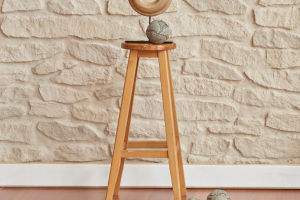Flower arrangement, often referred to as the art of floral composition, is the practice of arranging flowers within containers such as vases, bottles, plates, and pots, rather than cultivating them in a garden setting.
This delicate and creative craft has a rich history and multifaceted dimensions, encompassing both narrow and broad interpretations.
In its narrow sense, flower arrangement confines itself to the use of containers as the sole medium for floral expression, with a focus on fresh-cut flowers as the primary materials.
However, as the art of flower arrangement has evolved over time, it has embraced a broader sense that includes various forms of floral expression, transcending the limitations of containers and encompassing arrangements without utensils and even elaborate bouquets.
The origins of the art of flower arrangement can be traced back to humanity's innate fascination with flowers. Through the timeless beauty of blossoms, people have sought to encapsulate the essence and magnificence of life itself.
This creative pursuit found its roots nearly 2,000 years ago, as civilizations began to experiment with the concept and prototypes of flower arrangement.
Contrary to common misconceptions, flower arrangement is far from being a simplistic task; it is a profound art form requiring careful consideration of numerous factors. Different occasions demand distinct styles and approaches, necessitating an understanding of the essence of flower arrangement and its multifaceted connections.
The flower arrangement stands as a testament to the human spirit and an expression of artistry. It is intricately interwoven with various other forms of artistic expression such as literature, painting, sculpture, architecture, music, dance, and drama.
Through the medium of flowers, individuals have conveyed their emotions and experiences, painting a vivid canvas of life.
Digging deeper into the art of flower arrangement, we encounter several pivotal aspects and elements that contribute to its complexity and charm, as well as its relationships with other art forms:
1. Historical and Cultural Significance
Flower arrangement is deeply rooted in diverse cultural and historical contexts.
For instance, Japanese tea ceremonies feature meticulously crafted floral arrangements with camellias, while Western Garden art celebrates the organic growth of flowers. This diversity reflects the aesthetics and values unique to each culture, adding depth to the art.
2. Flower Selection and Artful Handling
The art of flower arrangement extends beyond mere placement; it entails the thoughtful selection of flowers and their creative manipulation.
Factors such as color, shape, texture, and the language of flowers all contribute to the layers of meaning and emotion conveyed in each arrangement.
3. Artistic Composition
Similar to the principles of composition in painting and photography, the placement of flowers within containers requires careful consideration of factors like height, position, angle, balance, and harmony. These principles ensure that each arrangement is visually captivating and emotionally resonant.
4. Seasons and Themes
The art of flower arrangement is adaptable, allowing artists to capture the essence of different seasons and themes. Spring may evoke bright colors and vibrancy, while autumn may be characterized by a sense of abundance and warmth.
Additionally, floral arrangements can be designed to convey specific themes such as celebration blessings.
5. Emotional Connection with Flowers
Beyond aesthetics, the art of flower arrangement serves as a conduit for emotional expression and healing. Through floral compositions, individuals can convey their deepest emotions, pay tribute to nature and life, and find solace in the natural world.


